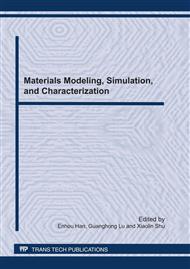p.308
p.315
p.321
p.328
p.336
p.343
p.350
p.355
p.361
Evaluation of the Properties of Polyaspartic Polyurea Coated Concrete Subjected to the Co-Action of Freeze-Thaw Cycles and NaCl Solution Immersion
Abstract:
The deterioration of coated concrete subjected to co-action of freeze-thaw cycles-NaCl solution immersion double factors exposure was investigated in this study. Adhesion, chloride content and resistance of chloride ion diffusivity of two types of polyaspartic ester polyurea coated concrete were analyzed. Test results showed that the adhesion of QF-1 (PAE-b-H12MDI prepolymer H66) and QF-2 (PAE-b-H12MDI prepolymer H62) coated concrete reduced about 5% respectively which kept excellent under the double factors exposure after 200, 300 days and 25, 50 times of cycles. The degradation process of coated concrete simultaneously exposed to co-action exposure was significantly accelerated. In co-action exposure tests, the average chloride ion content of coated concrete increased about 33% and 87% after 25 and 50 times of cycles compared with single NaCl solution immersion exposure; the chloride ion diffusion coefficient of concrete substrate increased with the increase of exposure time and freeze-thaw cycles. Freeze-thaw cycles results showed a severe influence on chloride ion diffusion and permeation of surface protection coating of concrete. Research also showed that the chloride ion diffusion of coated concrete subjected to the co-action of freeze-thaw cycles-NaCl solution was coincided with the Fick’s second law.
Info:
Periodical:
Pages:
336-342
Citation:
Online since:
June 2011
Authors:
Price:
Сopyright:
© 2011 Trans Tech Publications Ltd. All Rights Reserved
Share:
Citation:


